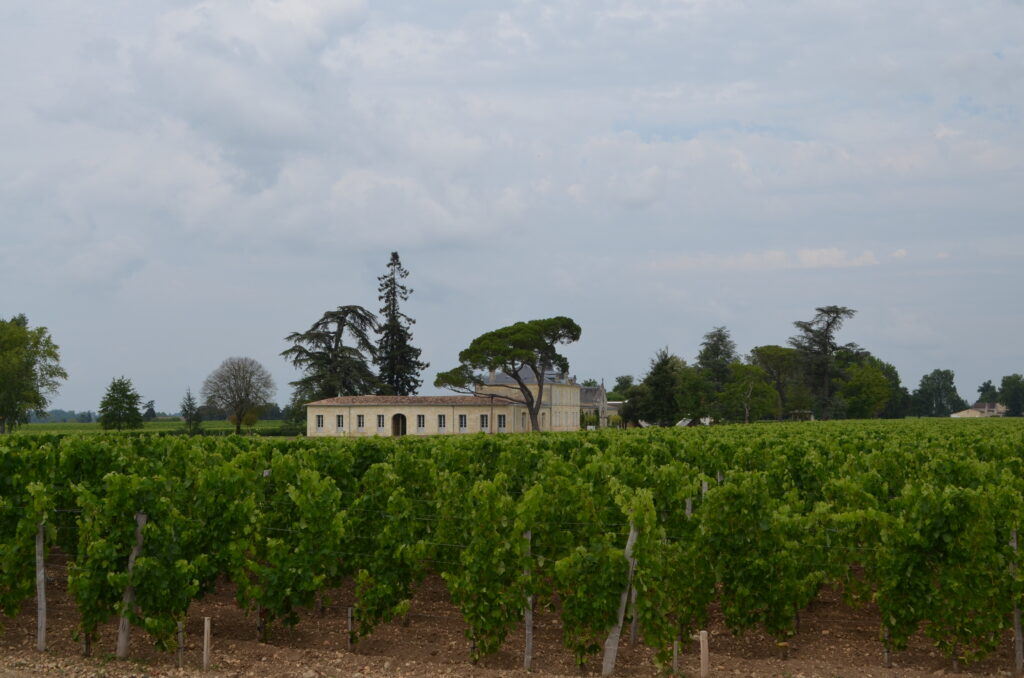
Let’s start off with a toast to our veterans! The Marine Corps birthday is November 10, followed a day later by Veterans Day. If you haven’t seen the Wine Concepts blog on Veterans Day and Champagne, check it out here. Moving on to this week’s topic . . .
Have you ever wondered why some folks make something simple and enjoyable like wine so controversial? For example, in 1955 the Bordeaux Right Bank appellation of Saint-Émilion adopted a system of ranking vineyards that includes five classifications, and every ten years it revises the list. Now, classification systems can be helpful . . . if they're not overdone. But, unless you’re a Saint-Émilion geek, their classification system is mind numbing. Plus, the revisions tend to outrage the winemakers, who lawyer up and engage in wine wars, further adding to the confusion.
- There’s a lot of money (both vineyard land value and wine price) riding on the classifications, which provokes some nasty fights. Think along the lines of a Manchester United soccer game that lasts for several years.
So how to figure out Saint-Émilion? The starting point is that the wines are generally Merlot predominant, with varying percentages of Cabernet Franc. There are two appellations, the basic Saint-Émilion AOC and the Saint-Émilion Grand Cru AOC. And this is where the confusion begins: although “Grand Cru” typically signifies a region’s most prestigious wine, here Grand Cru AOC by itself doesn’t mean much of anything. So, if a waiter pushes an overpriced bottle labeled “Saint-Émilion Grand Cru” don’t get too excited.
- The Grand Cru AOC has quality classifications, and these appear on the bottle. “Premier Grand Cru Classé” is the highest level, and it’s divided into the “A” and the lesser “B” categories. Ranked below them is the “Grand Cru Classé.” As the classification level increases, so do the prices.
- Of course, Saint-Émilion wines don’t have to be classified – some very nice wines don’t bother and just use the basic AOC on their label. Some don’t think it’s worth the effort, and smaller vineyards are loath to spend the approximately 15 - 20,000 euros necessary just to prepare the application.
The 2022 classification revisions were particularly entertaining. Three of the existing four Premier Grand Cru Classé “A” vineyards declined to participate: Château Cheval Blanc (shown above), Château Ausone, and Château Angelus. They believed that their reputations spoke for themselves and that the system no longer fairly judged wine quality. For example, part of the evaluation is based on such trivia as advertising budget, accessibility of the tasting rooms to the public and - wait for it – the number of charging stations for electric cars in the parking lot. Although a major component of the evaluation is wine tasting, another concern was that some of the individuals rating the wines had a stake in the results.
- For those keeping score at home, the three best wines are now outside the system, there are two Premier Grand Cru Classé “A” (Château Pavie and Château Figeac), 12 Premier Grand Cru Classé “B,” and 71 Grand Cru Classé.
- All of which leads to the essential question: who cares? Most consumers, even if they understand them, don’t use the classifications in their purchasing decisions. In contrast, the neighboring appellation of Pomerol has observed the Saint-Émilion theatrics with bemusement – they’ve never had a classification system and their wines are some of the most expensive and prestigious in the world. Perhaps the classifications have become more for the winemakers than the consumer.
Our wine of the week is a 2018 Château Laroque Grand Cru Classé ($42). I picked this because it’s a well-regarded, reasonably priced wine that’s typical of the appellation. It’s predominantly Merlot with a touch of Cabernet Franc, aged in oak barrels for a year. This wine is relatively young -- it's expected to be at its peak between 2023 - 2040 -- and it needs an hour or so of decanting at this stage. On the nose, it shows plum and dark fruit along with earthy and spice notes. On the palate, it's full-bodied, the tannins are grippy but will soften with age, and it has nice plum and mocha notes with an unusual, but pleasant, touch of saline minerality. The finish is medium and pleasant. This is a really nice wine and well worth the money.
- This a wine is made for food, particularly meat dishes with mushrooms and herbs.
- If you enjoy a nice right bank Bordeaux, put some Château Laroque back for a couple of years and you'll be rewarded.
Cheers!
